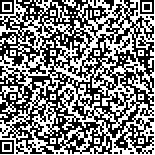下载中心
优秀审稿专家
优秀论文
相关链接
摘要

激光指向、足印大小和形状、能量等参数的精确提取是评估星载激光测高数据质量的重要指标。然而,对这些参数的研究和理解目前还不明确,为准确提取和理解这些参数,本文依托ICESat/GLAS的激光剖面阵列(LPA)影像数据,采用激光能量最大强度的1/e2弱化背景噪声影响,利用灰度加权一阶矩阵法和椭圆拟合法提取LPA影像的5个特征参数,并与ICESat/GLAS官方提供的结果比较了不同运行周期的相对误差,实验结果表明,LPA质心提取精度可达0.9″,优于0.3个像素,相对定位精度可达0.37″,优于0.11个像素,结果与GLAS官方结果相当。由于在轨温度、激光能量随着运行周期的改变,导致LPA影像特征参数呈现不同程度的变化,本文的方法能有效监测这些参数的变化。星载激光光斑影像特征提取和分析对数据处理和质量评价具有重要性,利用ICESat光斑影像数据开展试验验证,为已经成功发射的高分七号和后续的国产陆地生态系统碳监测卫星提供参考。
The quality of ICESat/GLAS satellite laser altimetry data is mainly dependent on the complex relationships between several factors in the path of laser transmission and on the illuminated surface, including clouds, atmospheric aerosol, satellite pointing, laser energy, topography, vegetation, footprint size, shape, and orientation. Although ICESat/GLAS has a high precision of elevation (~10 cm), the horizontal accuracy is relatively poor (~5 m). Therefore, the precise positioning of the laser shoot point has become an urgent problem.In the ideal situation, the energy intensity distribution of the LPA is approximately Gaussian, and its shape is approximately elliptic on the ground. Considering the effect of the attenuation of the transmitted laser energy in the atmosphere, the size of the spot image boundary can be determined by the 1/e2 maximum energy after eliminating the influence of the background noise of the LPA image. Therefore, we extracted the Laser Profile Array (LPA) image centroid and parameters of ICESat/GLAS via the 1/e2 maximum energy distribution and the least square ellipse fitting in different campaigns, respectively.Result shows that the extraction and relative positioning accuracies/frequencies of the LPA centroid can reach 0.9″/40 Hz and 0.37″/40 Hz, respectively, which are better than 0.3 and 0.11 pixels, respectively. The centroid results are similar to the official centroid provided in GLAH05. The parameters, namely, azimuth (computed as the angle between major axis and the LPA x-axis), major axis, eccentricity, and total intensity, were only approximations using the maximum energy distribution in different campaigns.The method in this study can effectively monitor the changes of these parameters. The characteristic extraction and analysis of space-borne laser spot image are of great significance to data processing and quality evaluation. ICESat’s spot image data were utilized to carry out experimental verification, providing reference for the launched of GF-7 and the follow-up domestic Terrestrial Ecosystem Carbon Monitoring Satellite.

